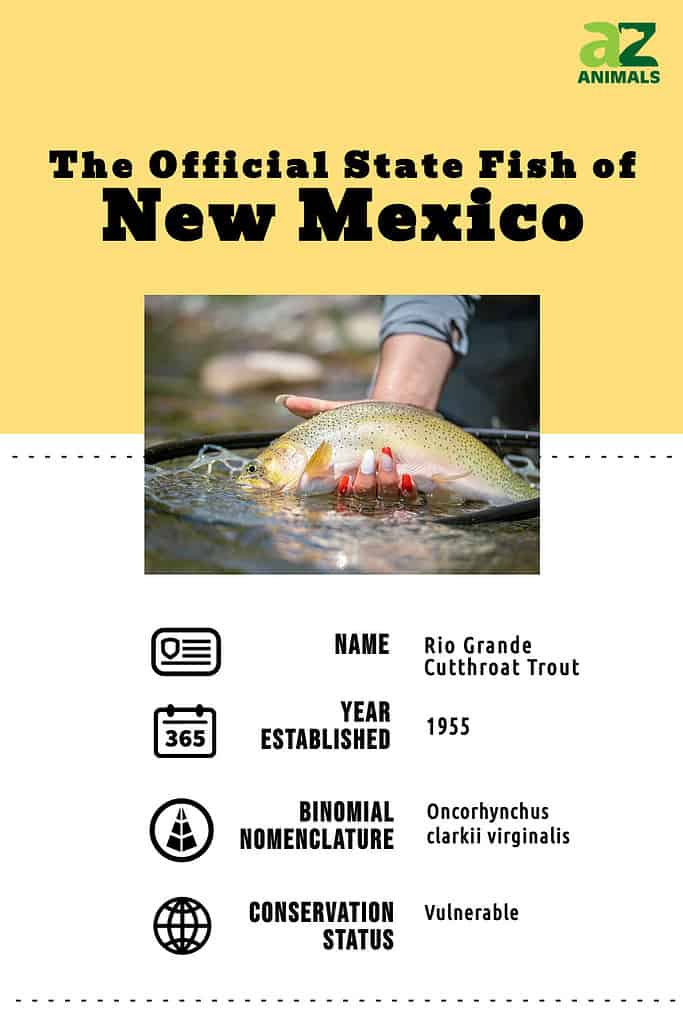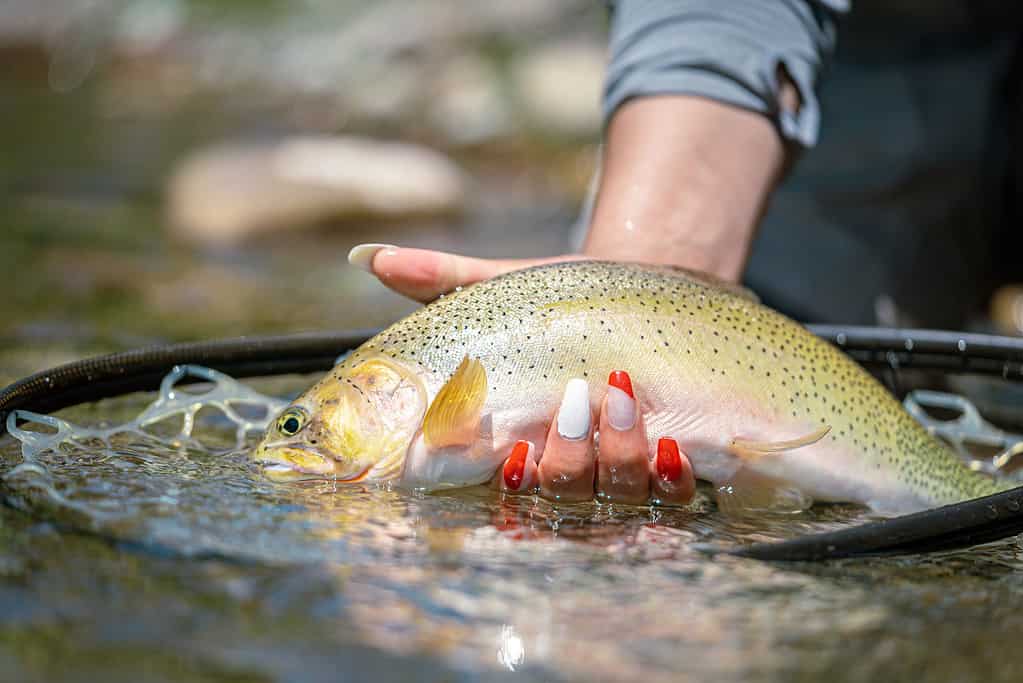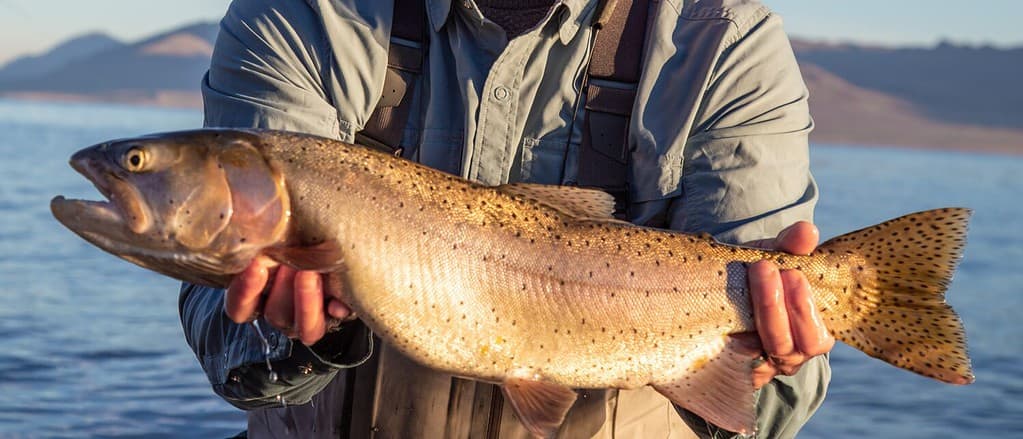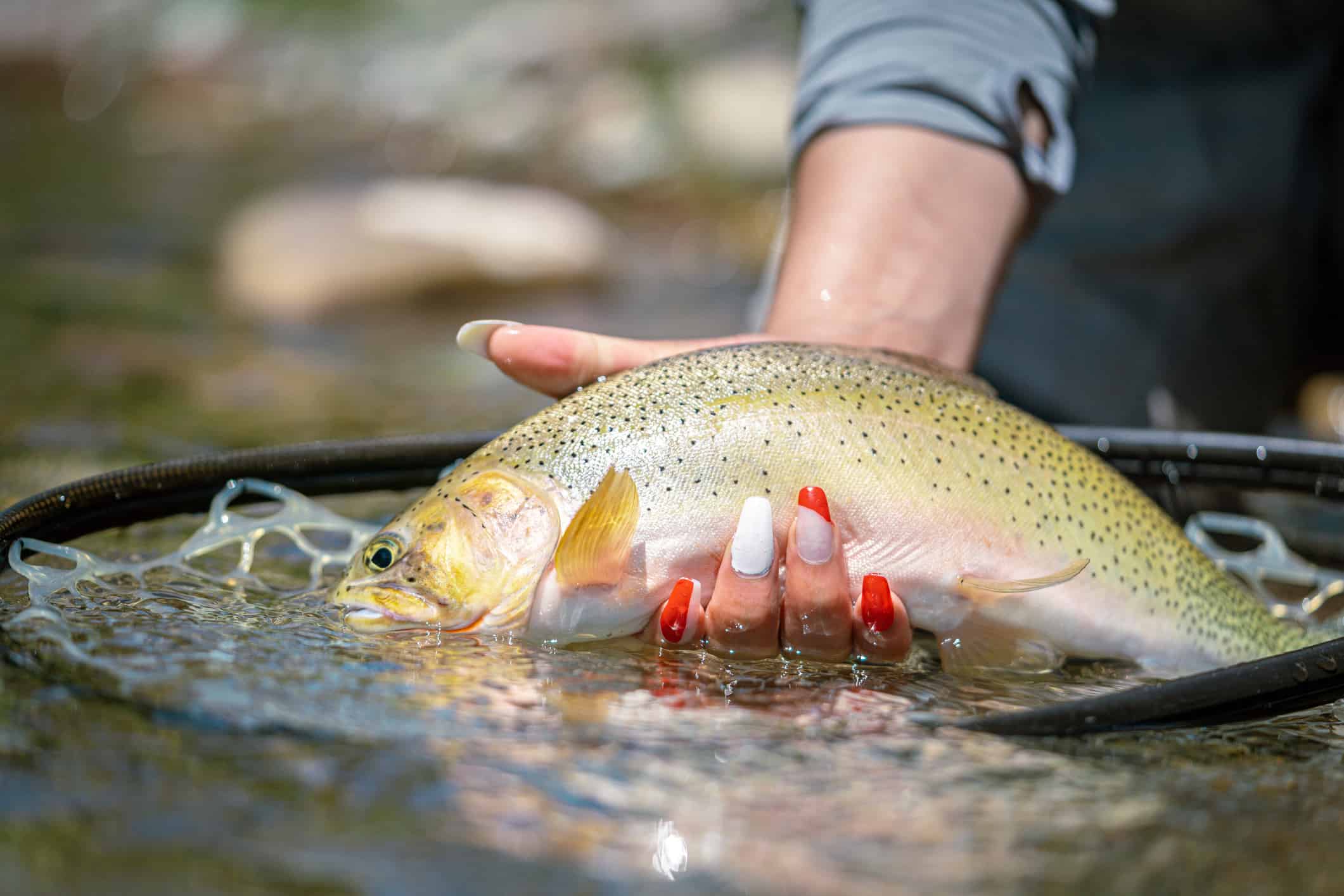Prepare to delve into the intriguing world of the official state fish of New Mexico. This amazing species occupies a particular place in the heart of the Land of Enchantment. This is thanks to its vivid colors and distinctive environment.
The official state fish of New Mexico, with its fascinating features and unmistakable beauty, is a real symbol of the state’s aquatic habitats. We’ll examine every nuance of its external features, from its glistening scales to its recognizable markings. Get ready to be mesmerized by the dazzling patterns that adorn this magnificent fish.
We’ll also delve into the ecological significance of this state fish, investigating its function in the rivers, lakes, and streams of New Mexico. It’s time to learn about the special adaptations that enable it to flourish in its native environment and the crucial function it performs in preserving the delicate balance of the state’s aquatic ecosystems.
What is the Official State Fish of New Mexico?

This stunning and hardy fish enjoys a particular place in the hearts of New Mexicans. It has come to represent the region’s distinctive natural heritage and ecological significance.
The Rio Grande cutthroat trout is only found in the pure waters of the Rio Grande. As a result, it has come to symbolize the state’s dedication to conservation and preservation. By being named the official state fish in 1955, it serves as a constant reminder of New Mexico’s commitment to preserving its natural wonders for coming generations.

The Rio Grande cutthroat trout symbolizes the state’s dedication to conservation and preservation.
©iStock.com/Wirestock
The History of the Relationship Between People and the Rio Grande Cutthroat Trout
Beyond just being beautiful, the Rio Grande cutthroat trout symbolizes a stronger bond with the environment and a long cultural past. Native American cultures have treasured trout for ages as a representation of virtue, toughness, and adaptability. Numerous generations have been supported by its presence in the state’s rivers. It is a crucial resource for both subsistence and leisure.
The choice of the Rio Grande cutthroat trout as the state fish is a reflection of New Mexico’s understanding of the difficult balance that must exist between preserving the natural environment and allowing for human activity. It serves as evidence of the state’s dedication to safeguarding the sustainability of its priceless aquatic resources and preserving its various ecosystems.
Just as well, the Rio Grande cutthroat trout has grown to be popular among scientists, recreational fishers, and environment lovers. Those looking for the rush of a catch will find it to be a thrilling challenge thanks to its vivid colors and feisty personality. The distinct genetic makeup of the fish and its adaption to the Rio Grande watershed provides important new perspectives on the complex web of life in the area.
The Rio Grande cutthroat trout represents the state’s natural beauty, cultural value, and commitment to environmental preservation. Its existence serves as a reminder of how closely related people and the environment are, motivating us to pursue sustainable lifestyles and save the priceless ecosystems that support us all.
The Anatomy of the Rio Grande Cutthroat Trout
The remarkable anatomy of the Rio Grande cutthroat trout allows it to survive in its particular watery habitat. The Rio Grande cutthroat trout’s body is streamlined, which makes it easier for it to navigate through the water. It boasts a stunning variety of hues, including a striking red-orange slash mark called a “cutthroat” on the underside of its jaw that gives it its name. Usually olive or greenish-brown on the upper body, it blends in with its surroundings quite well.
The trout’s fin structure is one of its most distinguishing characteristics. There are two dorsal fins present, one nearer the head and the other towards the tail. Typically, the first dorsal fin has black dots. The second one is more colorful and has a combination of red, orange, and black spots.
Another interesting feature of the Rio Grande cutthroat trout is its tail or caudal fin. Because it is forked, the fish can move around and retain equilibrium in the water. This trout also has teeth that are excellent for capturing prey in its mouth. It can catch and hold onto prey like insects and tiny fish thanks to its short, hooked jaws. The Rio Grande cutthroat trout’s eyes are on the sides of its head. This placement gives it a broad field of vision. It also gives them the ability to spot possible prey or predators in their surroundings.

The Rio Grande cutthroat trout is a subspecies of cutthroat trout, like the Lahontan (pictured).
©CSNafzger/Shutterstock.com
Habitat
The native habitat of the Rio Grande cutthroat trout is quite ideal for this fish. The rivers and streams that flow through the Rio Grande watershed are home to the trout. The water in these streams is cold, transparent, and clean. These factors must exist for the trout to survive and flourish.
The Rio Grande cutthroat trout favors places with a combination of shallow and deeper ponds within its habitat. The trout can rest, hide, and seek refuge from predators in these ponds. They are also excellent locations for trout to locate food since they frequently harbor a variety of aquatic invertebrates and small fish.
These trout live in a riverbed that is normally composed of rocks, gravel, and occasionally sand. These sediments provide crucial hiding spots for trout as well as ideal breeding grounds. It is also crucial to have underwater flora, such as plants and algae. By luring insects and other tiny animals, they provide both a cover for the trout and a source of food.
The Value of Riparian Vegetation
The trout’s habitat also heavily depends on its surroundings. There is often a form of vegetation known as riparian vegetation along the banks of rivers and streams of the Rio Grande River. Along these waterways, grasses, bushes, and trees flourish, offering shade that keeps the water temperature mild. The trout’s health depends on this shade since they like cooler water.
The general health of this fish’s habitat is influenced by things like the integrity of the local ecology and the quality of the water. The trout depends on pure water that is devoid of pollution and extra silt. The long-term survival of the trout depends on practices that protect and conserve the ecosystem, such as sustainable land use and ethical fishing.

The Rio Grande River is where you will find most Rio Grande cutthroat trout.
©iStock.com/Greg Meland
Life Cycle
The growth and reproductive process of the Rio Grande cutthroat trout is quite intriguing. The act of spawning is where everything starts. Cutthroat trout that are fully grown move to appropriate breeding grounds in rivers and streams in the spring. The female trout uses its tail to excavate a dip in the gravel bed to serve as her nest, also known as a redd. The male trout then uses his sperm to fertilize the eggs that she has laid in the redd.
The female covers the fertilized eggs with gravel after fertilization to shield them from predators and the environment. The eggs grow during a process known as incubation, depending on the flow of oxygenated water to live. Depending on the water’s temperature and other environmental circumstances, this time frame might persist for several weeks.
Fry, or baby fish, eventually hatch from the eggs. These fry are originally fed by a yolk sac that is linked to their bodies and gives them the nutrition they require. As they develop, the fry start to swim and eat minute aquatic insects and other aquatic microorganisms.
The trout travels through many phases as it develops further. It develops from a fry to a fingerling, which is a little trout approximately the size of a finger. Since the trout is learning to navigate its surroundings and look for food, the fingerling stage is essential for its growth.
The fingerling trout develops into a young trout over time, then into an adult trout. Depending on elements like food supply and ecological circumstances, the trout’s precise maturation period can change. When a trout reaches adulthood, it is prepared to take part in spawning and continue the cycle.
Diet
The basic yet varied diet of the Rio Grande cutthroat trout supports its growth and survival. Aquatic insects make up the majority of the Rio Grande cutthroat trout’s diet. These include a variety of insects, including midges, caddisflies, stoneflies, and mayflies. The trout are experts at seeing these insects in the water by either using their eyes or by feeling their vibrations and motions in the water.
The Rio Grande cutthroat trout can eat other tiny aquatic creatures in addition to insects. This can include tiny fish fry or minnows, as well as crustaceans like freshwater shrimp and crayfish. These prey items offer the trout a rich amount of protein and minerals.
It’s also interesting to note that opportunistic feeding is likewise a behavior of Rio Grande cutthroat trout. This indicates that they don’t have particular dietary preferences and will eat whatever is readily accessible. This can include terrestrial insects like ants, beetles, and grasshoppers that fall into the water.
The trout’s eating habits are regulated by several variables, such as the season, water temperature, and the accessibility of food sources. The trout may concentrate mostly on insect eating during the warmer months when there are more insects around. They may rely more on alternative food sources in the winter or when there are fewer insects around. The capacity of the trout to modify its diet to the available resources is a crucial survival tactic that enables it to flourish in many environmental settings.
The History of Rio Grande Cutthroat Trout Fishing in New Mexico
It has been a long and illustrious tradition in New Mexico to fish for Rio Grande cutthroat trout. Rio Grande cutthroat trout fishing was very important to the area’s local Native American tribes. The trout was a crucial food source for some tribes, including the Pueblo and Apache. To capture trout in the rivers and streams, they devised a variety of fishing methods, including the use of nets, spears, and traps.
Rio Grande cutthroat trout fishing evolved with the advent of Spanish explorers and colonizers in the 16th century. The Spanish popularized fishing methods utilizing lines, hooks, and bait that offered a more leisurely and sporty approach to fishing for these creatures. They engaged in both leisure fishing and fishing for food because they recognized the quantity and quality of trout in the streams.
Rio Grande cutthroat trout fishing developed further after New Mexico joined the United States in the 19th century. More individuals from throughout the nation started traveling to New Mexico to enjoy the thrill of trout fishing as a result of better transportation and an increase in tourism. Anglers wanting the challenge of catching this natural species began to frequent the state’s rivers and streams.
To maintain sustainable fishing methods and safeguard the populations of trout, mechanisms for licensing and regulation of fishing have evolved throughout time in New Mexico. These rules sought to maintain the harmony between fishing enjoyment and species conservation, as well as to protect the ecological integrity and natural beauty of the fishing regions where Rio Grande cutthroat trout live.
Conservation
Over the years, the Rio Grande cutthroat trout has encountered conservation issues. However, actions are being taken to safeguard and rebuild its numbers. Still, the Rio Grande cutthroat trout’s conservation status is cause for worry. The populations of trout have decreased in many locations in New Mexico as a result of several factors, such as habitat deterioration, water pollution, invasive species, and overfishing. The species has been described as endangered or at serious risk of being severely threatened.
Conservation initiatives have been put in place to deal with these problems. The habitat and populations of the trout are being protected and restored by government organizations, conservation groups, and regional communities.
Habitat restoration is a crucial element of conservation. Improvements are being made to the riparian vegetation, water quality, and habitat fragmentation found throughout the Rio Grande. These programs seek to provide favorable conditions for the trout to flourish. This is done by maintaining the purity of the rivers and streams where they are found.
Fighting Off Invasive Species
Just as well, conservationists are attempting to lessen the harm that invasive species are causing these trout. The Rio Grande cutthroat trout can be outcompeted for resources by non-native fish species like rainbow trout and brown trout. These fish can interbreed with the cutthroat trout, resulting in genetic dilution. Elimination and management of invasive species are via the use of different control strategies. Through these strategies, native trout can return to their natural habitats.
To maintain sustainable fishing of the Rio Grande cutthroat trout, fishing laws are also being established in New Mexico. Catch quotas, size limitations, and catch-and-release procedures are all part of these rules. These initiatives attempt to preserve thriving trout populations by continuing to provide chances for recreational angling by encouraging ethical fishing methods.
Programs for outreach and education are essential in spreading the word about the value of protecting Rio Grande cutthroat trout. Visitors and natives of New Mexico alike must make an effort to create a feeling of stewardship among fishers, local communities, and the wider public through public education, workshops, and community engagement.
Conclusion
When it comes down to it, sustainable fishing methods, invasive species control, public awareness campaigns, and habitat restoration are all necessary for the conservation of Rio Grande cutthroat trout. These initiatives are crucial for maintaining trout populations and guaranteeing the iconic species’ long-term survival in the rivers and streams of New Mexico. The state fish of New Mexico needs your help!
Thank you for reading! Have some feedback for us? Contact the AZ Animals editorial team.








